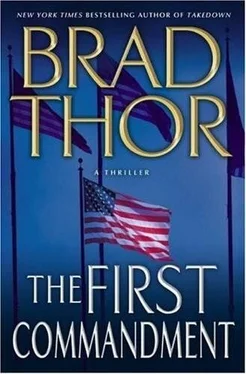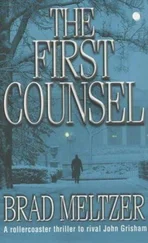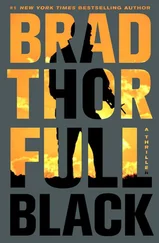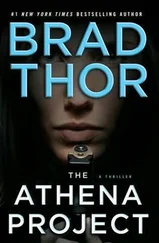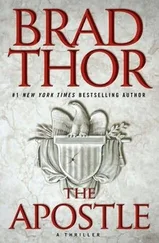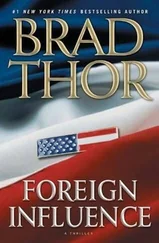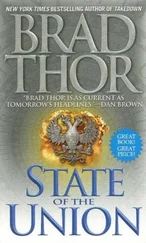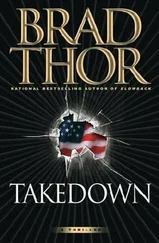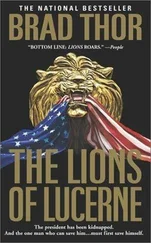To this file, said to be one of the most closely guarded secrets of the Al Qaeda leadership, had been added thousands upon thousands of more names since the 1990s. These mujahideen were from all walks of life and were drawn from more ethnic and socioeconomic backgrounds than any Western government would ever admit. They had been recruited, indoctrinated, trained, and dispersed around the world to wait until they were called to battle.
As Roussard drove his van across the San Diego-Coronado Bridge he reflected on what might happen to him if he was apprehended. This was America, after all, and it had already done its worst to him in Guantanamo. Catching him here on their own soil, they would do even less. That’s how easy they were to exploit. They passed convoluted laws that served to protect their enemies better than their own people.
When America caught its so-called terrorist enemies, it lacked the courage to put them to death. Zacarias Moussaoui, the blind cleric Sheik Omar Abdel-Rahman, and even Ramzi Yousef were all given life sentences. They were a testament to America ’s cowardice and weakness, and the fact that it would inevitably fall to the true followers of Islam.
Merging onto Third Street, Roussard made several turns and doubled back twice to make sure he wasn’t being followed. When he got to the address on Encino Lane, he parked the van at the base of the driveway and placed an orange cone both in front of and behind the vehicle. While he doubted anyone was going to notice anything at this time of night, a home disaster restoration truck might pique a neighbor’s interest, but it wouldn’t warrant a call to police.
As he approached the front door, Roussard removed a lockpick gun from his pocket and hid it beneath his box-style metal notebook. As he reached the door, he pretended to ring the bell. Quietly, he worked the lock, knowing the woman inside did not have a home alarm system.
When the lock released, he stepped inside and closed the door behind him. Roussard paused in the entryway until his eyes grew accustomed to the darkness. The house smelled like furniture polish, mixed with the scent of the nearby sea.
Once his night vision was established, he moved quietly down the hallway toward the master bedroom. The hall was lined with family photographs, most of them from many years ago.
At the bedroom, Roussard found the door wide open and his victim fast asleep upon her bed. Crossing over to her, he tucked the metal folder beneath his left arm and unzipped his coveralls.
For a moment, he thought he might have dropped it, but then his hand closed around the object he was searching for.
When he looked back down at his victim, he received the shock of his life. Her eyes were wide open and she was staring up at him. Her bedroom windows were open, and if she screamed, he could be done for.
Roussard’s instincts took over. He grabbed his notebook with both hands and swung-hard. He hit the woman across the left side of her head.
Her mouth opened as if to scream and Roussard hit her again. The woman’s eyes closed and she lay motionless atop her bed.
Blood ran from her nose and her ear. It matted her long gray hair and stained her nightgown. She was unconscious, but still very much alive, which was how he wanted her.
Dropping his notebook on the bed, Roussard scooped the woman up into his arms and carried her into the bathroom. There he placed her in the tub, stripped off her nightgown, and covered her body with a moist paste. Next he sealed all the bathroom vents with duct tape.
He walked back outside to the van and retrieved two sealed plastic buckets and a tool belt.
Back in the bathroom, Roussard set the buckets down next to the tub and removed an atomizer from inside his coveralls.
He opened the woman’s right eye first and then the left, liberally applying the substance and making sure each eye had been completely covered. His job was almost finished.
Roussard removed a screwdriver from his tool belt and pried the lids loose on each of the buckets. He grabbed a towel from above the toilet and tossed it just outside the bathroom door. It was time.
Prying the lids off both buckets, he emptied their contents over his victim, still lying unconscious in her bath, and then hurried from the bathroom, making sure to close the door firmly behind him.
Roussard wedged the towel beneath the door and fixed it in place with more duct tape. He then removed the cordless drill from his tool belt along with a handful of screws and secured the door firmly to its frame.
He walked back outside, replaced the orange cones in the van, and slowly drove back the way he had come.
At the San Diego Marriott Hotel and Marina, Roussard changed out of his coveralls, rubbed the van down for fingerprints, and headed for his dock. The boat was right where his handler had told him it would be.
Once he had navigated his way out into the open, inky-black water, he took out a clean cell phone, dialed 911, and gave the address of a woman in need of assistance on Coronado ’s Encino Lane.
When asked for his name, Roussard smiled and threw the phone overboard. They would piece together who was responsible soon enough.
BALTIMORE, MARYLAND
Tom Gosse, the funeral home’s director and namesake, had told Sheppard that he’d rather not have their conversation tape-recorded. That meant that the reporter had been forced to take notes, and he was the world’s shittiest note taker.
He couldn’t blame Gosse for not wanting to be on tape. If the story he was telling was true, someone had already been killed to keep it quiet.
Sheppard sat at his kitchen counter nursing a Fosters as he flipped through his notes. The funeral director was a solid guy. Several times during the interview, Sheppard backtracked and pretended to mess up the facts in order to trip him up, but Gosse was unflappable. There was no question in Sheppard’s mind that the man was telling him the truth.
According to his story, about six months ago he’d been at the chief medical examiner’s office doing a pickup. While waiting for the body, he had hung out with a pal of his, an assistant ME named Frank Aposhian. According to Gosse, they were pretty good friends. Their boys attended the same high school and the men played cards together a couple of times a month.
During Gosse’s pickup, his conversation with Aposhian was interrupted by two men who identified themselves as FBI agents and requested to speak to the assistant ME in private. As Frank was in charge of the office that night, the request didn’t strike Gosse as odd at all. Law enforcement officers came and went all the time in the ME’s office, and it definitely wasn’t for the coffee.
One of the agents followed Aposhian into his office while the other began examining corpses. But not just any corpses-he only seemed interested in unclaimed bodies, more commonly referred to as John Does. Many of them were found in parks, under bridges, or in abandoned buildings, often half-eaten by rats or stray dogs by the time they were discovered.
Their fingerprints were run through local and national databases and investigators were assigned to try to uncover their identities, but more often than not they went unidentified. Mortuary science students practiced their embalming techniques upon them, and the John and Jane Does were then placed in plywood coffins to be interred in the nearest potter’s field.
What struck Gosse as odd was that the agent didn’t appear to know what he was looking for. He didn’t carry any photos with him. He simply moved from corpse to corpse checking them over as if he were shopping for a new set of golf clubs.
When Aposhian appeared moments later with the man’s partner, the agent pointed at one of the bodies, and the assistant ME wrote down the number from the toe tag and went back to his office to process the paperwork.
Читать дальше
